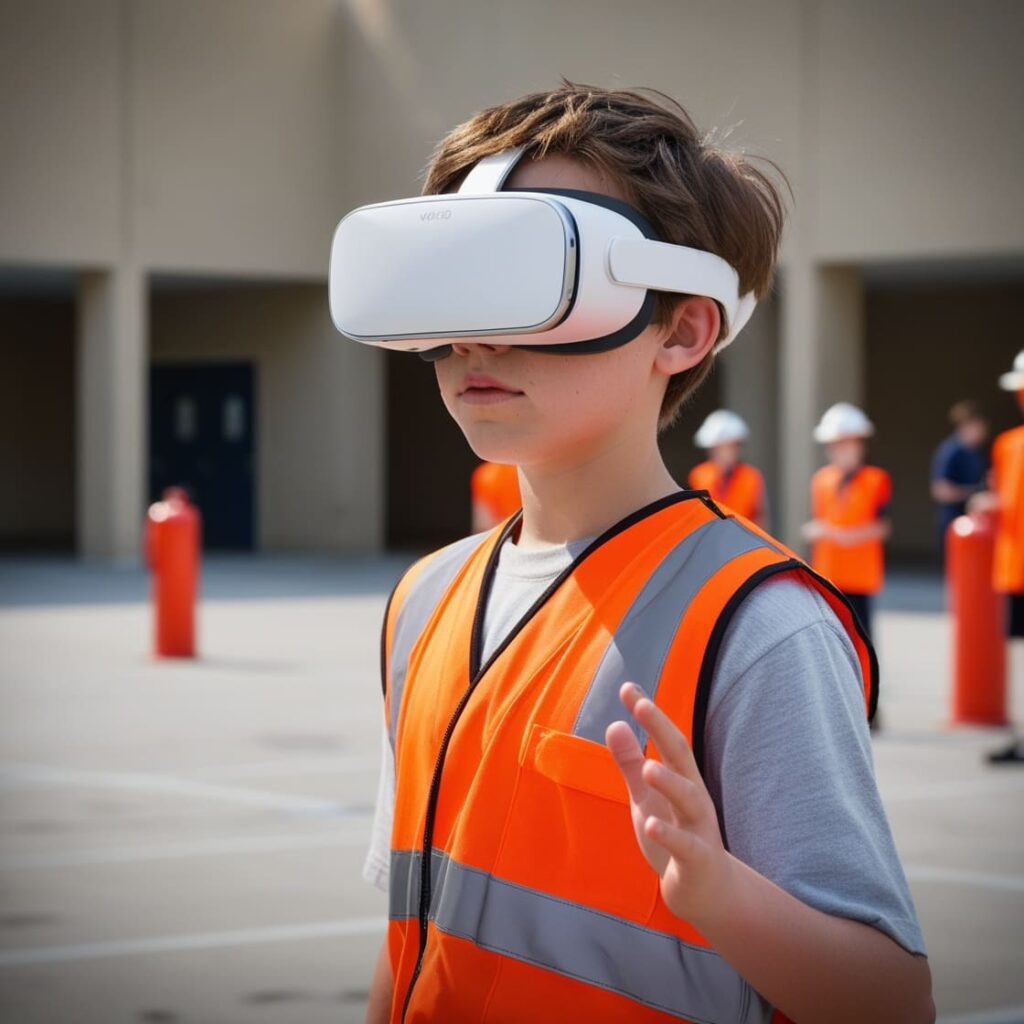

When we think of virtual reality (VR) in education, the first images that come to mind are often of students exploring distant planets in a science class or walking through ancient civilizations in history lessons. Indeed, VR has revolutionized these areas by making learning more interactive and immersive. But did you know that VR’s potential in schools extends far beyond these obvious applications?
At XReady Lab, we’re excited to share some surprising ways VR is enhancing education, helping students develop valuable skills that go beyond traditional academics.

Soft skills like public speaking, teamwork, and leadership are crucial for students’ future success but can be challenging to teach in a traditional classroom setting. Virtual reality education offers a safe and controlled environment where students can practice these skills without fear.
Imagine a student standing on a virtual stage, delivering a presentation to a simulated audience. With VR, they can:
By immersing themselves in these realistic simulations, students can refine their soft skills in ways that traditional methods can’t match.

Traditional safety drills can sometimes fail to fully prepare students for real emergencies. VR offers a powerful tool for emergency training by allowing students to experience realistic scenarios without any actual risk.
For example, students can participate in a virtual fire drill, navigating through a simulated building while learning proper evacuation procedures. They can experience various emergency situations, such as natural disasters or medical crises, and learn how to respond appropriately.
This immersive approach makes emergency training more effective and memorable, ensuring students are better prepared if a real emergency occurs.
You might wonder how VR fits into physical education. After all, can students really exercise with a VR headset on? Surprisingly, VR is opening new doors in sports training by providing detailed feedback and innovative ways to practice skills.

Athletes can use VR to hone their techniques in sports like boxing or soccer. By wearing VR equipment, they can practice movements that are meticulously tracked and receive instant feedback on their performance. VR can simulate various scenarios, allowing athletes to train in ways that might not be possible in real life.
Moreover, VR fosters competition and camaraderie by enabling students to train with virtual teammates or challenge opponents from around the world. This not only improves their skills but also keeps them motivated and engaged.
One of the greatest advantages of VR is its ability to bypass the limitations of classical education. In traditional settings, certain experiences are impossible, unsafe, or too costly. VR makes it possible to immerse students in environments they could never access otherwise.
Imagine students exploring the human body by traveling inside an organism or a cell, or embarking on a space mission to learn about the solar system. These experiences deepen understanding and make learning unforgettable.
At XReady Lab, we specialize in creating these kinds of immersive educational experiences. Our eduverse offers a range of modules that align with the curriculum and provide hands-on learning opportunities.
We’re passionate about bringing the benefits of VR to schools in innovative and practical ways. Whether it’s developing soft skills, enhancing emergency preparedness, or revolutionizing physical education, VR has the potential to transform education.
Ready to discover how VR can make a difference in your school?
👉 Request your free demo today!
Frequently Asked
We prodive VR biology, VR physics, and VR chemistry simulations. Please, check our catalog.
Please, fill the form to get demo labs for free.
Please contact our customer support service at support@xreadylab.com or book a call with the team to find out the conditions and book the VR class set up at your school.
Subscription to XReady Lab interactive VR labs. If you are a school, then you are also given access to the VR classroom system. VR class system helps you easily launch VR lessons for a large number of students, follow the experience of each student, as well as customise the content without developers.
We adhere to the world’s generally accepted recommendations and research. Our products are suitable for children from 12 years old.